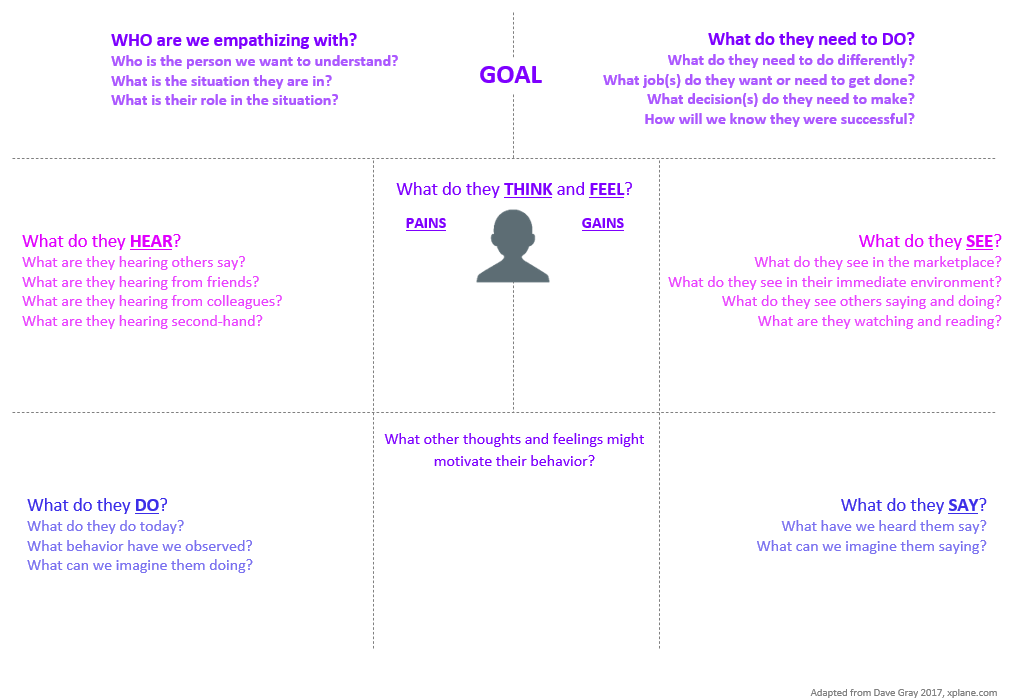In order to improve upon the overall user experience of our products, we must first understand our stakeholders and users. An Empathy Map is a powerful tool for understanding the needs, desires, and pain points of our stakeholders and/or users. By putting yourself in their shoes and considering their perspectives, you can gain valuable insights that inform and greatly improve your product development, strategy, and overall approach to a project.
How does this specifically feed into requirements? The information gained through empathy mapping can be applied directly to non-functional requirements, such as performance and useability. And, useability directly impacts user experience design such as UI and transitions.

When creating an empathy map, keep in mind:
- They are most useful at the beginning of the design process.
- They are most effective when they draw from real data derived from customer surveys, focus groups, social media analytics, or interviews.
- When stuck, use role-playing to elicit user experience and product response.
- If multiple personas have been identified, create individual maps for each persona.
An empathy map aims to gain a deeper understanding of a particular user or customer’s needs, wants, and desires. It is a tool used to build empathy and understanding toward the user by exploring their emotions, thoughts, and behaviors in relation to a specific product or process. The activity will help identify pain points and areas of opportunity that can inform product development and is often used in design thinking and customer-centric approaches. By creating an empathy map, you can better understand your stakeholders’ perspectives and design and implement the most valuable requirements, resulting in exceeded expectations.
For a more in-depth look, visit our blog on Empathy Mapping.

